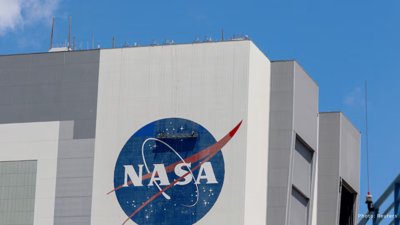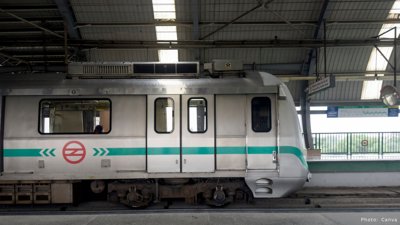
Post by : Amit
Italy Pioneers Earthquake Safety with Advanced Rail Warning System
Engineering, and public safety, Italy has launched an Earthquake Early Warning System (EEWS) for its high-speed rail network. This strategic implementation, led by Ferrovie dello Stato Italiane (FS) in cooperation with the National Institute of Geophysics and Volcanology (INGV), positions Italy at the forefront of seismic safety in rail transport—an innovation especially critical for a country with a turbulent tectonic history.
The initiative marks a historic step forward for Italian infrastructure. For years, the country has faced the dual challenge of expanding modern transport while mitigating its exposure to natural disasters. With this EEWS fully operational, Italy's high-speed rail corridors now feature a protective digital shield against sudden earthquakes, aiming to prevent catastrophic derailments and protect thousands of lives daily.
The Need for Speed—and Safety
Italy’s high-speed trains, such as the Frecciarossa and Italo, glide across the country at speeds often exceeding 300 km/h. While this efficiency is a national pride, it also introduces serious risks in earthquake-prone regions like Umbria, Abruzzo, and Campania. A sudden tremor without warning could lead to severe derailments, causing loss of life, infrastructure damage, and nationwide disruption.
The new EEWS system was designed specifically to combat this challenge. Unlike general earthquake response systems, this one is custom-tailored for high-speed rail dynamics. It ensures that a train traveling at high velocity can receive seismic warnings in time to slow down or even stop—before destructive waves reach the tracks.
This is not just about better technology—it’s about life-saving time. By detecting the initial P-waves (primary waves) that arrive before the more violent S-waves (secondary waves), the system gives operators a lead of a few crucial seconds to take action. And in rail transport, those seconds can mean the difference between a smooth stop and a devastating crash.
How the EEWS Works: A Look Under the Hood
At the heart of this earthquake detection system lies a network of high-sensitivity seismometers installed along rail corridors. These devices continuously monitor ground motion and feed real-time data into a centralized platform maintained by Rete Ferroviaria Italiana (RFI), the infrastructure manager under FS Group.
Once a seismic anomaly is detected, the system instantly analyzes the event’s magnitude, epicenter, and direction. Within milliseconds, it sends automated alerts to train control centers and on-board systems. Depending on the intensity of the tremor, different protocols are initiated—from speed reduction to a complete halt.
To ensure reliability, the warning system operates through redundant communication links and integrates with national seismic databases. It is also capable of cross-verifying alerts with Italy’s broader civil protection systems, ensuring that no false alarms interrupt rail services unless genuinely warranted.
This multi-layered approach ensures that trains do not just receive raw seismic data—but actionable, decision-validated instructions.
Protecting People and National Infrastructure
Italy’s high-speed rail network is a strategic pillar of its economy and social mobility. Stretching over 1,500 kilometers, it connects urban hubs like Rome, Milan, Naples, and Turin, serving millions of passengers annually. With such heavy usage, any interruption due to natural disasters can have cascading effects—on commerce, emergency services, tourism, and industrial supply chains.
Past quakes, such as the 2009 L’Aquila earthquake and the 2016 Central Italy earthquake, underscored the vulnerability of rail lines in seismic zones. Damage to tracks, bridges, and tunnels has previously led to multi-week suspensions. With the new EEWS, such scenarios can now be managed proactively—either by pausing operations or rerouting trains to safer tracks.
Moreover, the protection goes beyond the passengers. Critical infrastructure—like electrified overhead lines, viaducts, signaling equipment, and tunnels—can be automatically secured when an early warning is issued. This minimizes damage, shortens recovery time, and reduces repair costs.
Global Context and Inspiration
Italy is not alone in using early warning systems for railways, but it’s among the first in Europe to scale such a system comprehensively across high-speed corridors. Japan, a seismic pioneer, introduced EEWS following the 2004 Niigata earthquake, and saw the benefits firsthand during the 2011 Tōhoku disaster—where automatic train shutdowns saved countless lives.
Inspired by these models, Italy conducted several pilot studies in recent years. Trials near the Apennine fault lines showed positive results, which encouraged policymakers and engineers to expand the deployment nationwide. The collaboration with INGV also ensured that the system uses scientifically validated models, calibrated for Italy’s unique seismic signature.
The system’s software employs machine learning and AI-based algorithms that have been trained on over 50 years of seismic data. This ensures not just fast reactions—but intelligent ones, distinguishing harmless tremors from genuine threats. Future updates could even include satellite data integration and coordination with EU-wide warning networks.
Future Scalability and Upgrades
One of the system’s standout features is its modular design. As new high-speed corridors are built—such as the under-construction Turin–Lyon rail or the Rome–Pescara corridor—new sensors can be added without major reengineering. The system is also designed to update its software dynamically, adapting to new learnings from each earthquake event.
Plans are underway to extend the system’s reach to include regional rail lines and commuter trains in high-risk zones. Even cargo rail corridors, especially those passing through critical logistics hubs, may soon benefit from similar seismic safety frameworks.
Industry Voices and Reactions
Italian transport minister Matteo Salvini hailed the move as a “game-changing step for national rail safety,” emphasizing that in a world increasingly affected by climate and geological shocks, proactive safety is not optional—it’s a duty.
Luca D'Angelo, technical lead for RFI’s seismic safety team, said in a statement: “Our goal is to ensure that passengers travel not just fast, but safe. We’ve moved from a reactive mindset to a predictive one.”
Dr. Laura Marini from INGV added: “Italy is geologically complex, but science and engineering can bridge that risk. This system shows what’s possible when institutions collaborate.”
Passenger Trust and Public Perception
Initial feedback from passenger associations has been positive. Rail unions, while cautious about system reliability, agree that the EEWS boosts worker safety. Daily commuters also express growing confidence in the safety protocols, especially after recent media campaigns explaining how the system works.
Transparency has played a big role in public trust. FS Group has rolled out educational videos and social media updates explaining the system’s mechanics. Train operators are trained in emergency scenarios and mock drills have been held on select routes.
A Blueprint for Resilience
Italy’s adoption of an Earthquake Early Warning System on its high-speed rail network is not just a technical upgrade—it’s a visionary commitment to public safety and infrastructure resilience. As climate variability and seismic unpredictability become the new normal, countries must think ahead. For Italy, a nation rich in both history and hazards, this move sends a clear message: progress and preparedness must go hand in hand.
In doing so, Italy not only sets a benchmark for other European nations but redefines what it means to build safe, modern transportation systems in the 21st century. And in every second it saves, countless lives and futures may be protected.
Italy, Earthquake Warning System, High-Speed Rail










Advances in Aerospace Technology and Commercial Aviation Recovery
Insights into breakthrough aerospace technologies and commercial aviation’s recovery amid 2025 chall

Defense Modernization and Strategic Spending Trends
Explore key trends in global defense modernization and strategic military spending shaping 2025 secu

Tens of Thousands Protest in Serbia on Anniversary of Deadly Roof Collapse
Tens of thousands in Novi Sad mark a year since a deadly station roof collapse that killed 16, prote

Canada PM Carney Apologizes to Trump Over Controversial Reagan Anti-Tariff Ad
Canadian PM Mark Carney apologized to President Trump over an Ontario anti-tariff ad quoting Reagan,

The ad that stirred a hornets nest, and made Canadian PM Carney say sorry to Trump
Canadian PM Mark Carney apologizes to US President Trump after a tariff-related ad causes diplomatic

Bengaluru-Mumbai Superfast Train Approved After 30-Year Wait
Railways approves new superfast train connecting Bengaluru and Mumbai, ending a 30-year demand, easi